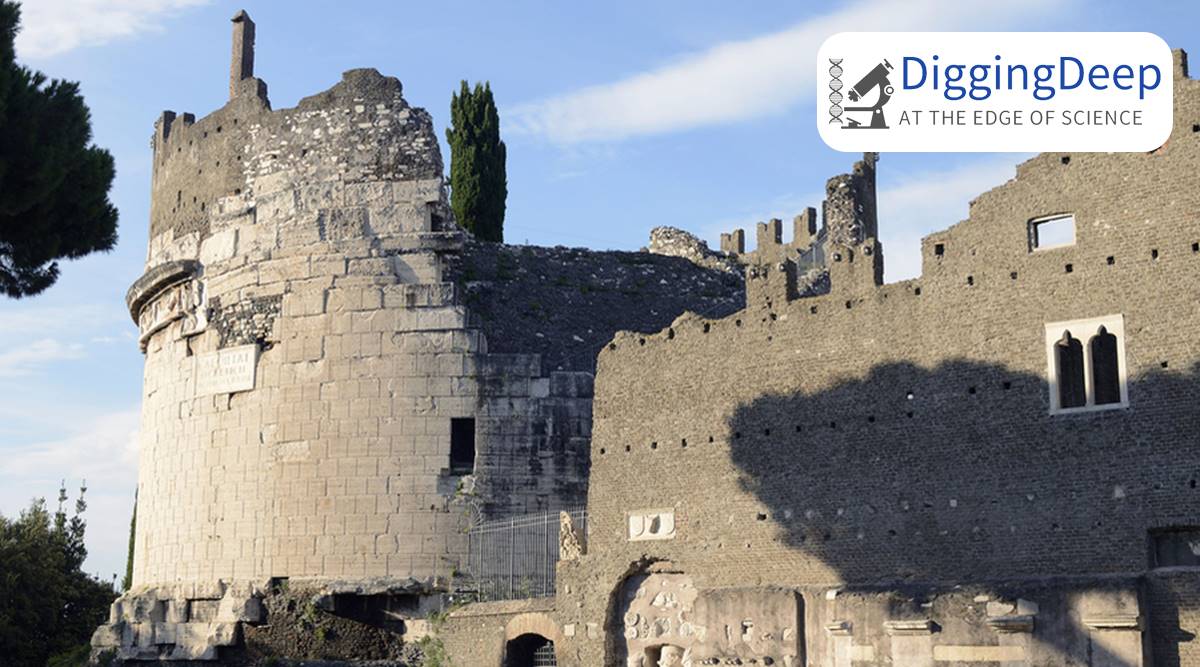
The mausoleum of a first-century BCE Roman nobleman’s daughter has lately been the topic of analysis offering insights into the supplies that went into its development. The Tomb of Caecilia Metella, located on the outskirts of Rome, is intently related to the a lot bigger context of the archaeological website of Capo di Bove. The positioning corresponds to the interval of Imperial Rome (27 BCE to 476 CE).
Architecturally, the construction of the Tomb of Caecilia Metella consists of a cylindrical dome on a sq. podium. “The concrete of the cylindrical wall’ deserved a more in-depth inspection as a result of ‘it stays extremely cohesive regardless of 2050 years of publicity as a result of infiltration of rainwater, groundwater and excessive humidity,” the paper states.
Science behind the robust substance
The rationale behind the tomb’s power is that it was constructed from the deposits of the eruptions of the close by Alban Hills volcano. Within the case of the tomb, the binding agent within the mortar was calcium-aluminum-silicate-hydrate, and the combination consisted of alluvial deposits and Pozzolanelle tephra.
Rocks and ash ejected out of a volcano (aka tephra) had been utilized by historic Greeks as cementing materials as early because the mid-first millennium BCE (almost 200-300 years earlier than Imperial Rome). The fabric is now generally known as Pozzolona, after the place in Italy (Pozzuoli), that has one of many main deposits of this number of volcanic ash.
A 2050 year-old Roman tomb presents @admir_masic lab and @UofUGG scientists’ insights on historic concrete resilience https://t.co/K7Olrxc6PI
— MIT CEE (@MIT_CEE) October 8, 2021
These have been documented by Roman historians like Vitruvius (80-15 BCE), who, whereas referring to those constructions, stated they “over a protracted passage of time don’t fall into ruins”. A up to date Roman historian-archaeologist, Esther Boise van Deman, refers back to the interval as “an Epoch within the historical past of concrete development”.
The binding materials of the tomb was produced from the response between lime and combination tephra. The rostrum was manufactured from tuff rock, which is made when volcanic ash is solidified after an eruption, and lava rock, which, because the title suggests, is a rock manufactured from post-eruption-magma.
Micro morphology research
The research employed scanning electron microscopy, revealing the micro morphologies of the constructing construction and X-ray diffraction to review the chemical composition in addition to the construction of the fabric.
The important thing to the sturdiness of the construction may, nonetheless, be the interface between the combination and the mortar.
The aggregates, derived from volcanic tephra on this case, continued to stay reactive lengthy after the construction was constructed and contributed to additional strengthening of the fabric. As an example, the tomb was uncovered to rain for hundreds of years. This precipitated the leucite crystals (a part of tephra combination), wealthy in potassium, to dissolve into the cementing matrix and make it wealthy in potassium.
An identical attribute is seen in different Roman constructions from the time, e.g. the Theatre of Marcellus and the Markets of Trajan. Whereas the identical course of would produce cracks in trendy concrete, the identical course of strengthened the binder, creating a brand new material within the wake.
Lead co-authors of the research printed within the Journal of the American Ceramic Society, Admir Masic, stated in a launch: “Understanding the formation and processes of historic supplies can inform researchers of latest methods to create sturdy, sustainable constructing supplies for the longer term.”
– The writer is a contract science communicator. (mail[at]ritvikc[dot]com)


